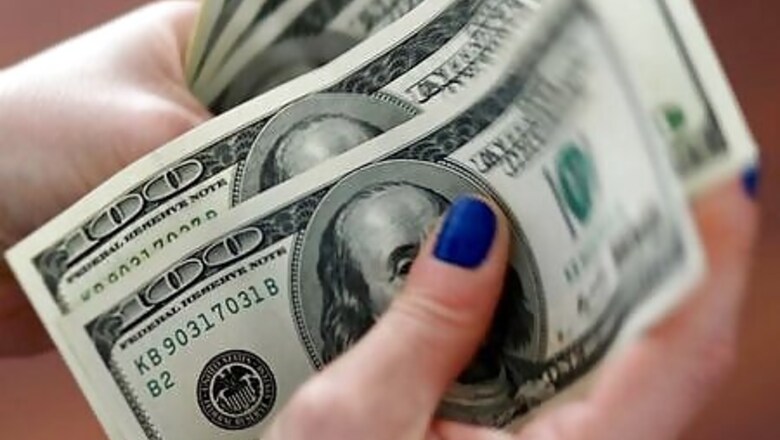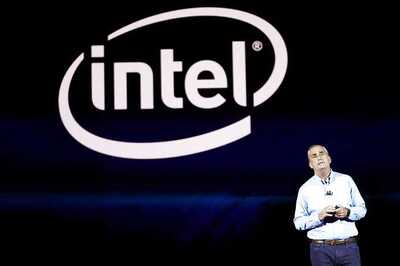
views
WASHINGTON The U.S. economy contracted at its steepest pace since the Great Depression in the second quarter as the COVID-19 pandemic shattered consumer and business spending, and a nascent recovery is under threat from a resurgence in new cases of coronavirus.
The bulk of the historic plunge in gross domestic product reported by the Commerce Department on Thursday occurred in April when activity almost ground to an abrupt halt after restaurants, bars and factories among others were shuttered in mid-March to slow the spread of coronavirus.
The collapse in GDP and faltering recovery put pressure on the White House and Congress to agree on a second stimulus package. President Donald Trump, whose opinion poll numbers have tanked as he struggles to manage the pandemic, economic crisis and protests over racial injustice three months before the Nov. 3 election, said on Wednesday he was in no hurry.
“This is hard to swallow,” said Jason Reed, finance professor at the University of Notre Dame’s Mendoza College of Business. “Right now, the American economy is speeding toward a fiscal cliff. Not only do we need Americans to take serious action preventing the spread of the disease, but we also need Congress to agree on another stimulus package and quickly.”
Gross domestic product collapsed at a 32.9% annualized rate last quarter, the deepest decline in output since the government started keeping records in 1947. The drop in GDP was more than triple the previous all-time decline of 10% in the second quarter of 1958. The economy contracted at a 5.0% pace in the first quarter. It fell into recession in February.
Economists polled by Reuters had forecast GDP plunging at a 34.1% rate in the April-June quarter.
The Commerce Department’s Bureau of Economic Analysis, which compiles the GDP report, attributed the tumble in output to measures taken in March and April in response to COVID-19, saying they “led to rapid shifts in activity.”
Though activity picked up starting in May, momentum has slowed amid a resurgence in new cases of the respiratory illness, especially in the densely populated South and West regions where authorities in hard-hit areas are closing businesses again or pausing reopenings. That has tempered hopes of a sharp rebound in growth in the third quarter.
Federal Reserve Chair Jerome Powell on Wednesday acknowledged the slowdown in activity. The U.S. central bank kept interest rates near zero and pledged to continue pumping money into the economy.
Stocks on Wall Street opened lower. The dollar was steady against a basket of currencies. U.S. Treasury prices rose.
BROAD HISTORIC DECLINES
Economists say without the historic fiscal package of nearly $3 trillion, the economic contraction would have been deeper. The package offered companies help paying wages and gave millions of unemployed Americans a weekly $600 supplement, which expires on Saturday. Many companies have exhausted their loans.
This, together with the sky-rocketing coronavirus infections is keeping layoffs elevated. In a separate report on Thursday, the Labor Department said initial claims for unemployment benefits increased 12,000 to a seasonally adjusted 1.434 million in the week ending July 25. A staggering 30.2 million Americans were receiving unemployment checks in the week ending July 11.
Consumer spending, which accounts for more than two-third of the U.S. economy, plunged at a record 34.6% rate last quarter. That followed a 6.9% pace of decline in the January-March period. Major retailers including JC Penney and Neiman Marcus have filed for bankruptcy.
Business investment tumbled at a historic 27% rate. It was pulled down by spending on equipment, which collapsed at a 37.7% rate. Investment is equipment has now contracted for five straight quarters. Boeing reported a bigger-than-expected quarterly loss on Wednesday and slashed production on its widebody programs.
The pandemic has also crushed oil prices, leading to deep cuts in shale oil production and layoffs. Spending on nonresidential structures such as mining exploration, shafts and wells plunged at a record 34.9% rate in the second quarter.
The housing market was not spared, with spending on homebuilding tumbling at 38.7% rate. But government spending rose at a 2.7% rate, thanks to the historic stimulus package. Spending by state and local governments, whose budgets have been decimated in the fight against coronavirus fell at a 5.6% rate.
Disruptions to global trade depressed exports and imports. Though a smaller import bill helped to narrow the trade deficit and was positive for GDP, it cut inventories, leading to a drawdown of stocks by businesses that subtracted 3.98 percentage points from GDP.
Disclaimer: This post has been auto-published from an agency feed without any modifications to the text and has not been reviewed by an editor


















Comments
0 comment